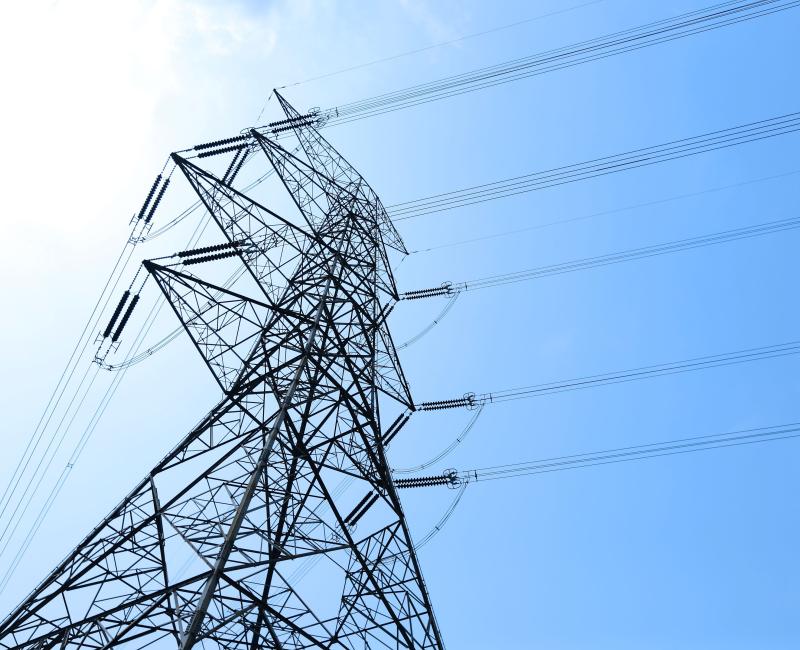11 SpLTCZC - Approved
11 SpLTCZC - Approved
Latest approved methodologies for splitting long-term cross-zonal capacity of the respective capacity calculation region
11 Scheduled exchanges
11 Scheduled exchanges
Documentation on the approval process of these methodologies
11 Scheduled exchanges - Approved
11 Scheduled exchanges - Approved
Latest approved scheduled exchange methodologies
16 CCM - Approved
16 CCM - Approved
Latest approved capacity calculation methodologies of the respective capacity calculation region
ACER-JRC webinar: ensuring sufficient grid capacity for electricity trade
ACER-JRC webinar: ensuring sufficient grid capacity for electricity trade

ACER consultancy study on incentivising efficient investments in electricity grids

ACER consultancy study on incentivising efficient investments in electricity grids
What is it about?
Significant enhancement in electricity grid capacity is needed to realise Europe’s decarbonisation objectives and ensure a high level of security of supply.
In the context of the European Commission’s EU Action Plan for Grids, ACER is looking at best practices to promote smart grids and network efficiency technologies through tariff design.
ACER has thus commissioned the Florence School of Regulation (FSR) to conduct a study on existing regulatory frameworks and how regulators could incentivise a more efficient use of existing and future electricity grids.
What is in the consultant’s report?
Building on the previous research conducted by FSR on behalf of ACER, this new report by FSR presents:
- An overview of regulatory practices in Europe, the United States and Australia that promote innovation and efficiency in electricity transmission investments.
- A new regulatory scheme which focuses on the value projects bring (i.e. benefit) and not on their costs. By sharing this benefit between the grid user and grid operator, a stronger incentive for technology-neutral solutions is created while mitigating the tariff increase (in comparison to the business as usual, e.g. investing into infrastructure alone).
Regulators request more time to decide on a new method for calculating electricity reserves

Regulators request more time to decide on a new method for calculating electricity reserves
What is it about?
On 22 May 2024, the National Regulatory Authorities (NRAs) of the Continental Europe Synchronous Area (CE) requested from ACER a six-months extension to decide on the Transmission System Operators’ (TSOs') proposal to introduce a probabilistic dimensioning approach of Frequency Containment Reserves (FCRs). This new approach aims to improve how FCRs are calculated to stabilise the power grid’s frequency during supply and demand imbalances.
The countries of the Continental Europe Synchronous Area are Austria, Belgium, Bulgaria, Croatia, Czechia, Denmark, France, Germany, Greece, Hungary, Italy, Luxembourg, the Netherlands, Poland, Portugal, Romania, Slovakia, Slovenia and Spain.
What does Frequency Containment Reserve (FCR) mean?
Under the EU Network Code on System Operation, FCRs (also known as primary control reserves) are active power reserves used as a first response to stabilise the power grid’s frequency after an imbalance between supply and demand.
In the event of a frequency deviation (e.g. following a planned or unplanned power plant outage), their power output can be quickly adjusted to restore grid stability.
Why consider probabilistic dimensioning for FCR?
Historically, TSOs in this region have used a ‘deterministic’ criterion for FCR dimensioning, ensuring that the FCR can handle frequency deviations resulting from the worst-case system outages, typically set at 3000 MW.
In November 2023, TSOs proposed a ‘probabilistic’ dimensioning for FCRs, which considers load and generation patterns, as well as inertia factors (such as synthetic and real-time minimum inertia). This approach aims to enhance the power system’s resilience by reducing the probability of insufficient FCR capacity to once every 20 years or less.
What are the next steps?
ACER intends to act promptly on this request, aiming to issue a decision by the end of July 2024.
If ACER decides to grant this extension, 11 January 2025 would be the new deadline for CE NRAs to reach an agreement on the TSOs’ proposal.
ACER Board of Appeal re-appoints Miro Prek as Chair, Andrea Biondi and Piet Eeckhout as Vice-Chairs

ACER Board of Appeal re-appoints Miro Prek as Chair, Andrea Biondi and Piet Eeckhout as Vice-Chairs
What is it about?

Congratulations to Mr. Miro Prek, as well as Prof. Andrea Biondi and Prof. Piet Eeckhout for their re-appointment as Chair and Vice-Chairs of the ACER Board of Appeal for an additional term of two and a half years (until 17 October 2026).
We look forward to continuing the fruitful cooperation and shared commitment with the Chair, the Vice-Chairs, the Members and the Alternates of the ACER Board of Appeal. Their standing, integrity and expertise are invaluable.
About the ACER Board of Appeal
The Board of Appeal plays an important role dealing with appeals lodged against ACER decisions. As such, it is important that its members and alternates act independently and in the public interest.
It is composed by six members and six alternates. They have a mandate of 5 years, which can be renewed. Members and alternates are selected among senior staff of the national regulatory authorities, competition authorities or other national or EU institutions with relevant experience in the energy sector.
